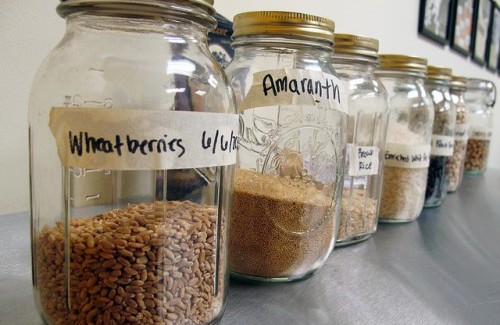
What Is a Whole Grain?
You may have heard that whole grain is healthy. But what is a whole grain?
The official definition from the Whole Grains Council is:
“Whole grains or foods made from them contain all the essential parts and naturally-occurring nutrients of the entire grain seed in their original proportions. If the grain has been processed (e.g., cracked, crushed, rolled, extruded, and/or cooked), the food product should deliver the same rich balance of nutrients that are found in the original grain seed. This definition means that 100% of the original kernel – all of the bran, germ, and endosperm – must be present to qualify as a whole grain.”
We asked registered dietitian Sarah Downs for the 411. What are the different types of whole grains?
Downs: “There are many types of whole grains, which makes it fun (and easy!) to incorporate them into your diet. Some of the most well-known include amaranth, barley, buckwheat, corn (popcorn included!), millet, oats, quinoa, brown and colored rice, rye, sorghum, teff, triticale, wheat (like spelt, farro, Kamut, durum and bulgur) and wild rice.”
Are whole grains healthy?
Downs: “YES! Whole grains contain many different nutrients (some more than others) including protein, fiber, iron, magnesium, phosphorus, zinc, copper, selenium, manganese, and B vitamins. Also, studies have shown that eating whole grains as part of an overall healthy diet instead of refined grains may lower the risk of many chronic diseases.”
What’s the difference between whole grain and whole wheat?
Downs: “Whole wheat is a kind of whole grain, so all whole wheat is whole grain, but not all whole grain is whole wheat.”
How do I know if something is whole grain?
Downs: “1. Look for the Whole Grain Stamp. The 100% stamp means that a food contains at least one full serving of whole grain in each serving and that all of the grain is whole. The basic stamp appears on products that contain at least half a serving of whole grain per serving.
2. Take a look at the ingredient list found on the nutrition facts panel. If the first ingredient listed contains the word “whole” it is likely (not guaranteed) that the product is mostly whole grain.”
What’s your favorite way to incorporate whole grains into your diet?
I love a traditional peanut butter and jelly sandwich on 100% whole grain sprouted bread. I also like to make hot cereal with oats and quinoa for a fiber-filled breakfast. Top it off with some fruit and nuts for a meal that keeps you full until lunchtime.
For additional resources:


























